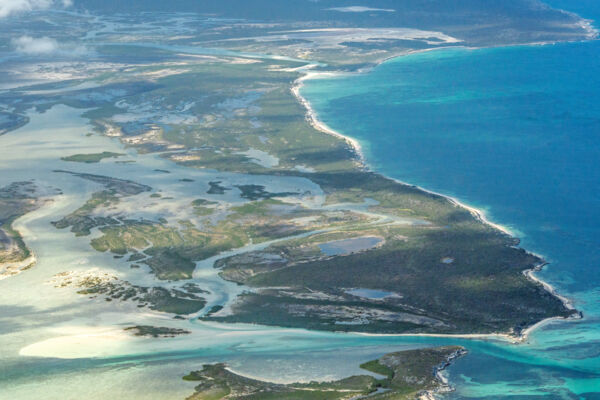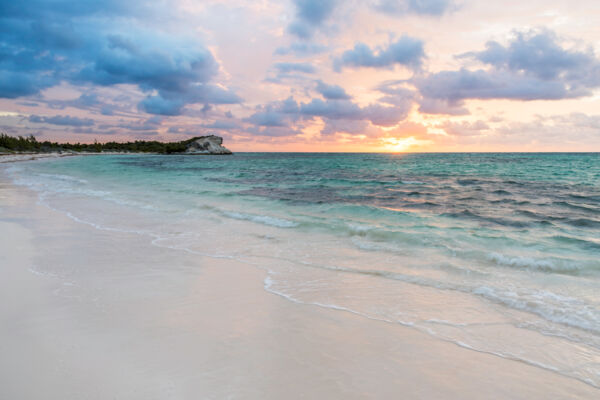McCartney Cay Turks and Caicos

McCartney Cay is an uninhabited cay in the Turks and Caicos that’s located between the islands of South Caicos and East Caicos, and near Plandon Cay and Middle Creek Cay. The landmass of the cay is roughly 600 acres (243 hectares), and the cay is about 3 miles (5 km) long across its longest span.
McCartney Cay is very long and narrow, with a beach lined by steep dune and semi-lithified marine limestone cliffs that covers almost the entirety of its eastern coast. Inland is a low and dry coastal dry forest, which transitions to red mangrove wetlands on the western side of the cay.
The channels and estuaries that surround McCartney Cay and Middle Creek Cay don’t have the breathtaking turquoise and blue hues famous throughout the Turks and Caicos, yet they do teem with life, especially sharks and large barracudas.
The coastal area near McCartney Cay is an amazing destination for water sports, especially kayaking, paddleboarding, and kiteboarding, and it’s also one of the finest birdwatching locations in the Turks and Caicos. It’s common to see frigatebirds, ospreys, brown pelicans, West Indian whistling ducks, and many types of small coastal birds.
Sargassum
Due to being located on the far eastern edge of the Caicos Islands, McCartney Cay can experience significant accumulations of sargassum and seaweed, which at times can even dye the ocean water in the area an unappealing brown and green.
Origin of the Name

Historically, this island has had a rather unfortunate name and was renamed in the 1990s after JAGS McCartney, the nation’s first Chief Minister and the first National Hero.
Iguana Conservation
Limited numbers of the endangered Turks and Caicos Islands rock iguana are present on McCartney Cay, yet their numbers may be dropping. On other cays, this has been due to invasive mammals such as cats and rats, which may be getting established on the island.
Many small uninhabited cays in the Turks and Caicos support populations of iguanas, and these isolated groups are considered a genetic reservoir critical to the conservation of the unique Turks and Caicos Islands Rock Iguana.
